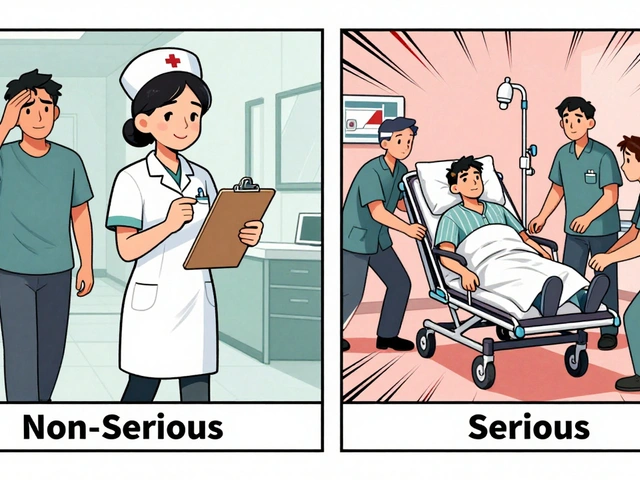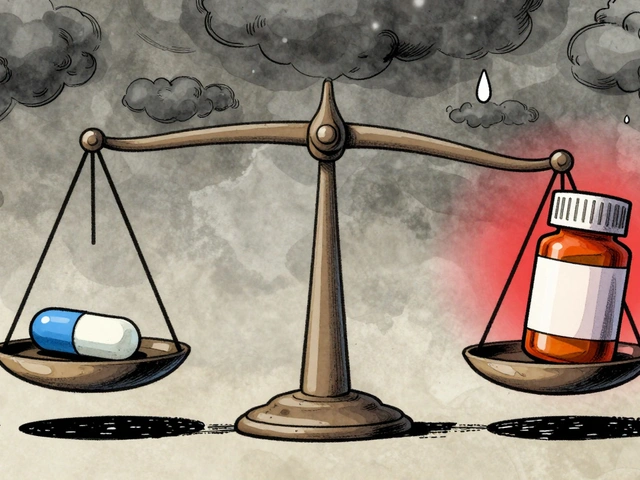
If you’ve ever felt an electric zap shoot through your cheek or jaw, you probably know there’s nothing quite like it. Trigeminal neuralgia doesn’t care about your plans—it hijacks your day with sudden, brutal pain. Meds help some folks, but what happens when pills just don’t cut it? That’s when doctors sometimes reach for nerve blocks and injections. These aren’t science fiction or pie-in-the-sky ideas; we’re talking about real-world tools for hitting the brakes on jaw-dropping agony. Here’s the thing: you don’t need to become a medical expert to understand how this works. Stick with me, and by the end, you’ll know exactly what these treatments offer, how safe they are, and if they’re worth asking your doc about.
What Is Trigeminal Neuralgia and How Do Nerve Blocks Fit In?
Let’s break down trigeminal neuralgia without the medical mumbo jumbo. Picture the trigeminal nerve as the phone line for your face—carrying signals about touch, temperature, even pain, back and forth between your face and your brain. For reasons that science is still untangling, this nerve sometimes goes haywire. Instead of just letting you know something touched your skin, it sets off fireworks of pain. Most people feel this in short, lightning-bolt attacks on one side of the face, especially when eating, talking, or even just brushing their teeth. It can be so sensitive that even a gentle breeze can spark a pain episode.
Doctors usually start with medications like carbamazepine (it’s the gold standard for trigeminal neuralgia), but about 25–33% of patients either don’t get relief or can’t tolerate the side effects. When meds aren’t enough, doctors shift gears to other strategies—this is where nerve blocks and injections come into play. Instead of treating your entire body, these options target the nerve directly. That makes them especially appealing for people who want to avoid the side effects of long-term medication.
Nerve blocks basically “turn off” the pain for a little while. A doctor injects something—usually a mix of anesthetic (like lidocaine) and sometimes steroids—around the irritated part of your trigeminal nerve. It’s kind of like muting a radio that’s stuck on full volume. Depending on the type of injection, relief can last hours, days, or even months.
This isn’t a miracle cure, but it’s nothing to laugh at either. In fact, studies in 2022 found nerve blocks had a success rate of around 70% for immediate pain relief, and about 40% of patients get relief lasting half a year or more. If you ask around in online support groups, you’ll see plenty of people who call these injections “lifesavers” during a bad flare.
Types of Nerve Blocks and How the Procedures Work
Not all nerve blocks work the same way, and “injections” is a catch-all term for a bunch of techniques. Let’s walk through the most common types:
- Peripheral nerve blocks target branches of the trigeminal nerve in the face. For example, you might get a supraorbital, infraorbital, or mental nerve block. This is usually for folks with pain in a specific area—like the jaw, upper lip, or around the eye.
- Gasserian ganglion blocks aim at the main hub where all the trigeminal nerve fibers bunch together near the base of your skull. This one’s for people with more widespread pain or when the simpler blocks just don’t cut it.
- Alcohol or glycerol injections kill off a tiny part of the nerve to give longer-lasting pain control—think of this as “scorching the earth” to reset the system. It’s more invasive and carries more risks, but some people get months or even years of relief.
- Botulinum toxin (Botox) injections might sound odd, but doctors have started using them to calm the trigeminal nerve. It doesn’t freeze your face, but it can help block the pain for a few months at a time.
What should you expect if you’re signed up for one of these blocks? Most of them only take 15–30 minutes in the doctor’s office. The doctor will clean the skin, maybe use a bit of numbing cream, and then insert the needle with help from an ultrasound or other imaging for precision. You’re often awake for the whole thing—no need for general anesthesia.
Check out this table for a quick look at different nerve block types, average relief times, and risks:
| Type | Relief Duration | Main Risks |
|---|---|---|
| Peripheral Nerve Block | Hours to weeks | Mild swelling, bruising, weakness in face |
| Gasserian Ganglion Block | Weeks to months | Numbness, chewing problems, rare infection/bleeding |
| Alcohol/Glycerol Injection | Months to years | Permanent numbness, eye or chewing muscle weakness |
| Botulinum Toxin (Botox) | 2–4 months | Rare weakness in muscles, mild pain at injection site |
Doctors decide which block to use based on your pain type, medical history, and how you’ve responded to other treatments. It’s not “one size fits all,” so expect a bit of back-and-forth before settling on a plan.

Benefits, Risks, and Who Should Consider Nerve Blocks
Why do people turn to nerve blocks, and are they really as safe as they sound? Good question. The biggest perk is targeted pain relief. Unlike popping a pill and hoping it mellows out your pain, nerve blocks can hit the problem spot hard—with fewer side effects. For folks who can’t stand drug side effects like dizziness or grogginess, this makes all the difference. Some people even use nerve blocks as a “reset button” during a bad flare before going back on meds or trying something different.
According to a 2023 review in the journal Pain Medicine, about 50–70% of patients get solid relief from nerve blocks, and complications are rare if the procedure is done right. We’re talking about a risk of infection or bleeding in fewer than 1 in 100 procedures. Still, there are some tradeoffs. The most common side effect is facial numbness—imagine going to the dentist and feeling like your lip is asleep for a while. Occasionally, there can be weakness in your chewing muscles, especially with deeper blocks. Most of the time these effects fade as the block wears off, but alcohol and glycerol injections can cause permanent numbness. Rarely, people can get infections at the injection site, so sterile technique is a must.
Not everyone should rush out and sign up for nerve blocks. If you have an active skin infection or certain bleeding disorders, your doctor may suggest a different route. Same goes for people who get allergic reactions to anesthetics. Also, if your trigeminal neuralgia is caused by a tumor or another clear physical issue pressing on the nerve, sorting out that root cause often takes priority.
Here’s a tip: if you’re on blood thinners, tell your doctor straight up. Some nerve blocks—especially the deeper ganglion ones—can raise the bleeding risk if you’re on meds like warfarin, even if you just took a baby aspirin last week.
Should you get multiple nerve blocks? Most doctors say it’s fine if the first round wears off and you need more. Some patients get three or four blocks a year and live comfortably between flares. But if you find yourself needing constant blocks just to function, your doctor will probably want to look at long-term options like surgery or radiofrequency ablation.
Tips, Research Insights, and Alternatives: Getting the Most Out of Your Treatment
So, how do you make nerve blocks and injections work best for you? First, keep a pain diary. It sounds tedious, but jotting down when pain hits and how bad it is can help your doctor figure out what’s really working (or not). This is huge in deciding whether repeat blocks or a different approach is needed.
Expectations matter. A nerve block isn’t a magic bullet that erases chronic pain forever. You’ll usually feel immediate relief (sometimes within minutes) from the anesthetic, but longer-lasting comfort depends on your body’s reaction. About half of folks find that each new injection gives less relief than the last, something called “tachyphylaxis.” If you’re seeing shorter pain-free gaps, ask about mixing up the meds or techniques.
Certain lifestyle choices can actually make a difference. Staying hydrated, avoiding triggers (cold wind, chewing tough foods), and practicing jaw relaxation exercises can help stretch out the pain-free time between blocks. It’s not a cure, but it stacks the deck in your favor. Some people swear by heat therapy (like a heated face mask) during mild pain days, but skip it if your doctor says no.
What does the latest research say? A 2023 clinical study found that combining nerve blocks with low-dose medications gave better long-term results than either one alone. Another trial showed Botox injections could slash pain scores by 50% or more for nearly 60% of participants at two months out. Real-life support groups often confirm these numbers—lots of people get their lives back using a mix of blocks, meds, and, sometimes, surgery.
Thinking about alternatives? If nerve blocks stop helping or you want to try other tech, there’s microvascular decompression surgery, radiofrequency ablation, or even gamma knife radiosurgery. These are bigger steps, so most doctors save them for stubborn cases or when everything else fails. Each carries its own risks and rewards—no single option fits everyone. If you do head toward surgery, be sure to ask your surgeon about downtime, success rates, and what the odds are for permanent numbness or pain returning.
Insurance usually covers nerve blocks for trigeminal neuralgia, but always double check. If you’re in the US, your doctor or hospital’s billing office can help with the paperwork. Some clinics even offer payment plans for out-of-pocket procedures, especially the rare ones like Botox injections.
You don’t have to fight trigeminal neuralgia alone, and you don’t have to settle for endless pain. Nerve blocks and injections won’t cure the problem, but for the right person, they’re a fast ticket back to daily life. Ask your doctor what fits your situation, be honest about side effects, and take a little control back from the pain. The options are better now than ever before, and research keeps pushing the boundaries further every year.
7 Comments
Nicole Tillman
May 28, 2025 at 06:07 AM
The underlying principle of these interventions is to interrupt the errant pain signaling that hijacks daily life. When medications fall short, a well‑placed block serves as a reset button rather than a permanent fix. It is crucial, however, to monitor for numbness or weakness that may temporarily affect chewing or facial expression. Patients who keep a detailed diary of flare‑ups can help the clinician fine‑tune the injection schedule. In practice, combining a short‑acting anesthetic with a low‑dose steroid often extends the therapeutic window. This balanced strategy respects both the urgency of relief and the need for long‑term management. Ultimately, the decision rests on a collaborative dialogue between patient and provider.
Sue Holten
June 11, 2025 at 03:27 AM
Oh joy, another needle-just what my day was missing.
Tammie Foote
June 25, 2025 at 00:47 AM
I see your point about collaborative dialogue, and I’d add that patients deserve clear information about potential risks before consenting. Transparency helps avoid the moral hazard of under‑informing vulnerable individuals. Moreover, the occasional numbness should be framed as a trade‑off rather than a hidden danger. Empowering patients with realistic expectations reduces disappointment when the block wears off. In short, ethical practice requires both efficacy and honesty.
Jason Ring
July 8, 2025 at 22:07 PM
i was watchin a video about gasserian ganglion block and it lookd super scary but the doc said its quick
really just a few minutes and you stay awake lol. they use ultrasound so the needle is precise which i think is pretty cool. i guess if you got bad facial pain it might be worth a try but talk to your doc first.
Kelly Hale
July 22, 2025 at 19:27 PM
The saga of trigeminal neuralgia has long been a lamentable tale of sufferers shackled to the whims of a dysregulated cranial conduit. In the annals of pain management, nerve blocks emerge as the unsung heroes, wielding a syringe like a torch against the encroaching darkness. One must first acknowledge the sheer audacity of a procedure that promises relief by merely introducing a transient chemical ally into the vicinity of a hyperactive nerve. The peripheral block, with its delicate targeting of the supraorbital or mental branches, exemplifies precision medicine at its most intimate scale. Conversely, the Gasserian ganglion block, a deeper foray into the skull’s cavernous corridors, demands both skill and courage from the attending practitioner. Yet, despite the technical complexity, the patient’s experience remains grounded in the simple hope of silence-a silence that can be measured not in decibels but in days, weeks, or months of unburdened living. Empirical data from recent studies illuminate a success rate hovering around seventy percent for immediate analgesia, a statistic that should stir both optimism and cautious scrutiny. The risk profile, while modest, cannot be dismissed; facial numbness, bruising, and the specter of infection lurk as potential companions to the therapeutic act. It is this delicate balance of benefit and peril that mandates a thorough informed‑consent dialogue, where the physician and patient co‑author the treatment plan. Moreover, the phenomenon of tachyphylaxis-diminishing returns upon successive injections-serves as a reminder that no single modality reigns supreme forever. For those whose pain persists beyond the diminishing horizons of blocks, adjunctive strategies such as low‑dose carbamazepine or even microvascular decompression beckon as next chapters. In the grand tapestry of chronic pain management, nerve blocks occupy a pivotal yet transient thread, weaving together immediate respite with the promise of longer‑term strategies. Patients are well advised to maintain meticulous pain diaries, charting triggers, durations, and relief intervals, for such data becomes the compass guiding future interventions. The healthcare system, too, bears responsibility, ensuring insurance coverage does not become an insurmountable barrier to accessing these potentially life‑altering procedures. In summation, while nerve blocks are not a panacea, they represent a vital instrument in the clinician’s armamentarium, offering a bridge from relentless agony to moments of peace, however fleeting they may be.
Neviah Abrahams
August 5, 2025 at 16:47 PM
The data shows a clear trend but many clinics ignore it leading to needless suffering many patients report prolonged numbness while the literature cites low infection rates this discrepancy points to systemic oversight and a need for stricter protocols the analysis also reveals that insurance denial is common and must be challenged by advocates for patient rights finally the future of trigeminal treatment hinges on transparent reporting and accountable practice






Ivy Himnika
May 14, 2025 at 08:47 AM
Targeted nerve blocks can provide rapid relief for trigeminal neuralgia without the systemic side effects of oral medication 😊. By injecting a small amount of anesthetic directly around the affected branch, patients often experience pain reduction within minutes. The procedure typically lasts under half an hour and can be performed in an outpatient setting. While the duration of relief varies, many report weeks of diminished discomfort before a repeat is needed. Discussing the specific block type with a neurologist ensures the approach matches the individual pain distribution.